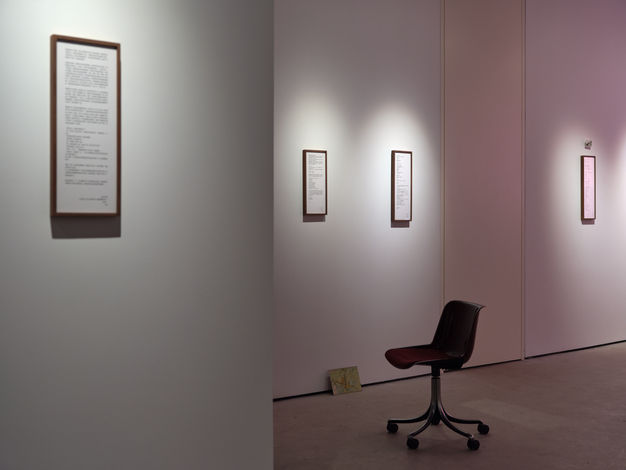
《房间的来信》
高清无声单频录像装置,黑白无声,3小时45分钟,2020
一场迟到的归途、无法重返的经历、以及对未知的等待……唤起了艺术家对故乡的想象,以及自我身份的寻觅。
艺术家回到故乡,将自己置身于没有任何时间参考和电子通讯的房间中,窗户被锡箔纸贴满,厚重的窗帘隔绝了室外的光线,窗外微弱的声响是她判断时间的唯一根据。她在这间房内重复着起床、写作、阅读、吃简单的食物、睡觉和等待。床的对面放置了一台日期被设置成 2020年1月1日的红外相机,不间断地录制她在这个隔绝房间内14 天的日常。
Letters From the Room
HD Single-channel video installation, no sound, black and white, 3h45min, 2020
The late return journey, the irretrievable experience, and the prolonged wait for an unknown evoked the artist's imagination of her hometown and a search for her own identity.
When the artist returned to her hometown, placing herself in a room without any reference to time or electronic communication, the windows were covered with tin foil, heavy curtains blocked out the outside light, and the faint sounds outside the window were her only basis for judging time. In this room, she repeated the routine of waking up, writing, reading, eating simple meals, sleeping, and waiting. Across the bed, an infrared camera set to January 1, 2020, continuously recorded her daily life in this isolated room for 14 days.











在无人对话的房间内,艺术家每天都会写一封不知收件人是谁的信。从房间的门缝中塞出,由母亲随机寄给她的某位朋友。
信中出现的我、你和她缠绕在真实记忆和虚构幻象的边界上,文字间隐藏的和她过去无法抵达的自身纠结为一。
Within a room where no one talks, the artist writes a letter every day to an unknown recipient, tucked out through the door and sent by her mother to one of her friends at random.
In which I, you, and she appeared in these letters, entwined on the border between real memory and fictional illusion, hidden between the words and her inaccessible past.










